
Students will rewrite a modern song with lyrics summarizing the Progressive Era reforms.
- Subject:
- Social Studies
- Material Type:
- Activity/Lab
- Author:
- William Allred
- Carrie Robledo
- Date Added:
- 05/18/2021

Students will rewrite a modern song with lyrics summarizing the Progressive Era reforms.
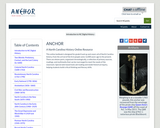
This online textbook is designed for grade 8 and up and covers all of North Carolina history, from the arrival of the first people some 12,000 years ago to the present. There are eleven parts, organized chronologically, a collection of primary sources, readings, and multimedia that can be rearranged to meet the needs of the classroom. Special web-based tools aid reading and model historical inquiry, helping students build critical thinking and literacy skills.
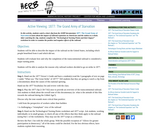
In this activity, students watch a short clip from the ASHP documentary 1877: The Grand Army of Starvationto learn about the impact of railroad expansion on Americans and the nation as a whole. After watching the clip, students complete the “Technological Turning Points and their Impact” worksheet in order to examine the positive and negative effects of the railroad.

Containing more than 50 articles from the award-winning Tar Heel Junior Historian magazine and over 40 lesson plans, this multidisciplinary Educator Notebook will enrich your exploration of North Carolina and American history with diverse perspectives. This resource's link takes you to a very short form that gives you free downloadable access to the complete PDF book.

Students will learn about North Carolina's little known eugenics program, as well as explore the constitutionality of state mandated sterilization by reviewing the NC Supreme Court case, In re Moore. Stidents will culminate this lesson by making recommendations on how the state should make amends for the program's past controversial actions, as well as examine actual consolation recoomendations recently made by the North Carolina's General Assembly.
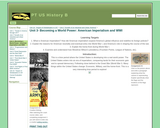
I have created a Google sites website that provides students with the opportunity to explore the United States becoming a world power independently. The predominant area of focus of this unit is U.S. Imperialism, and WWI. I am currently employed at an alternative education high school and am going to be using this site to let the students complete the tasks at their own pace in order maximize learning as well a flexibility. I have included a study guide/ note taking guide, assessments, projects and other various assignments.

Students will explore the Supreme Court case Board of Education v. Earls, in which high school sophomore Lindsay Earls challenged her school's drug testing policy. Students will watch a documentary on the case, apply the Fourth Amendment to the case, and further their understanding by participation in activities such as creating an anti-drug campaign and a moot court or mock trial.

In this lesson, students learn about the role and functions of the Federal Reserve System. They participate in an activity to learn how the purchase or sale of U.S. Treasury securities affects the supply of money and credit in the economy. Finally, they discuss what the Fed learned about implementing monetary policy as a result of the Great Depression.

This lesson is designed to explore the Election of 1896 and how editorial cartoons were used to support the candidates. Students will analyze cartoons supporting McKinley's candidacy and create cartoons supporting the candidacy of Bryan. Students will determine the effectiveness in persuading the public's vote.

Students will examine the purpose, function, origin, and historical development of the Electoral College in order to gain a better understanding of how Americans elect the President. Students will then evaluate issues of fairness and representation with regard to the Electoral College. Finally, students will participate in a class debate over the pros and cons of the current system.
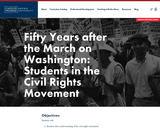
Students will hear stories from former civil rights activists, analyze what motivated students to join the movement, what their experiences were like, and consider the relevance of this history today.
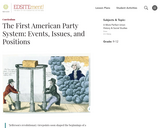
Fear of factionalism and political parties was deeply rooted in Anglo-American political culture before the American Revolution. Leaders such as George Washington and Thomas Jefferson hoped their new government, founded on the Constitution, would be motivated instead by a common intent, a unity. But political parties did form in the United States, with their beginnings in Washington's cabinet.
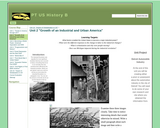
I have created a Google sites website that provides students with the opportunity to explore the American Industrial Revolution on their own. I am currently employed at an alternative education high school and am going to be using this site to let the students complete the tasks independently. I am still working on the concrete structure of the unit to help with the flow of the unit. I have included a study guide, assessments, projects and other various assignments.
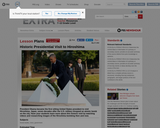
Students learn about President Obama's visit to Hiroshima, Japan by watching videos and researching images of the Hiroshima bombing then and now.

Each day, students will investigate and specific inventor/invention from the attached list (they can either choose from or be assigned from the list) and using www.history.com and www.bio.com will investigate infromation about the eventor/invention to complete questions 1-5 on the graphic organizer. Students will then consider the impact of the event on American culture today to answer Questions 6 & 7.
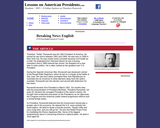
In this lesson on an adapted article about President Theodore Roosevelt, students will learn about his life, legacy, and importance to the American history. Lesson includes speaking, listening, reading and writing activities, games, homework and on line quiz. This resource supports English language development for English language learners.
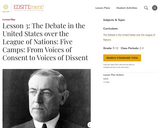
American foreign resonates with the debate over U.S. entry into the League of Nations-collective security versus national sovereignty, idealism versus pragmatism, the responsibilities of powerful nations, the use of force to accomplish idealistic goals, the idea of America. Understanding the debate over the League and the consequences of its failure provides insight into international affairs in the years since the Great War and beyond. In this lesson, students read the words and listen to the voices of some central participants in the debate over the League of Nations.
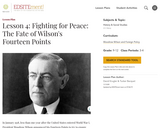
In January 1918, less than one year after the United States entered World War I, President Woodrow Wilson announced his Fourteen Points to try to ensure permanent peace and to make the world safe for democracy.
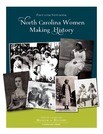
This Educator Notebook provides information on Women’s History in North Carolina for teachers to use as a resource, either as stand-alone units, or integrated into standard curriculum. Included is research from museum curators and educators, and articles published in the Tar Heel Junior Historian magazine which are written for students in grades 4-12. Lesson plans and suggested activities complement many of the topics. Adaptable to multiple ages, they meet curriculum goals set forth by the NC Department of Public Instruction and connect to classes in national and world history, geography, economics, and the arts, and can be part of any unit of social studies. This resource's link takes you to a very short form that gives you free downloadable access to the complete PDF book.

Students learn about the geography and significance of the D-Day invasion.
GeoInquiries are designed to be fast and easy-to-use instructional resources that incorporate advanced web mapping technology. Each 15-minute activity in a collection is intended to be presented by the instructor from a single computer/projector classroom arrangement. No installation, fees, or logins are necessary to use these materials and software.